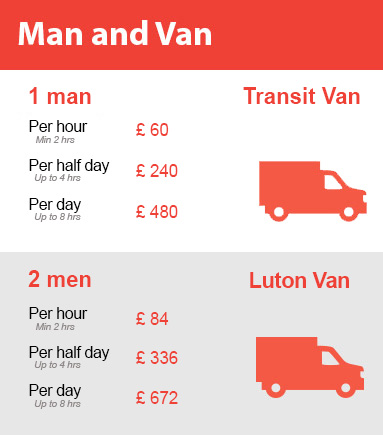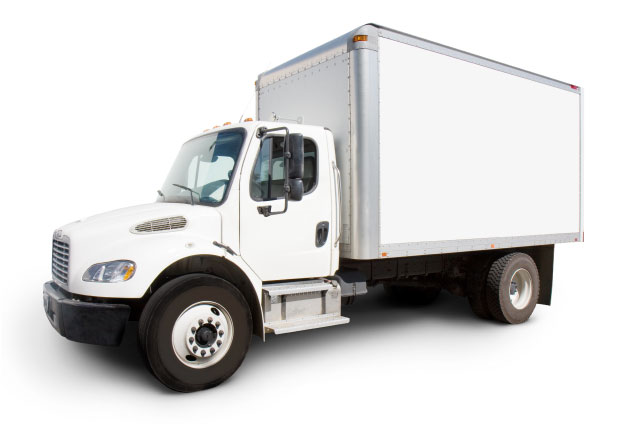Hitting All the Right Keys: Avoid DIY Piano Moves
Posted on 30/05/2025
Hitting All the Right Keys: Avoid DIY Piano Moves
Introduction: Moving a Piano Isn't Just Another Task
Thinking about moving your piano yourself? While it may seem like a simple, cost-saving DIY project, moving a piano is an intricate process that demands expertise, special tools, and delicacy. This ultimate guide will walk you through why hiring professionals is a must, explore the risks involved with DIY piano moves, and outline how expert piano movers ensure your cherished instrument stays in perfect harmony.

Why Is a Piano Move So Difficult?
Pianos are among the most valuable and sensitive items in any household. Here's why moving a piano is unlike moving any other piece of furniture:
- Sheer Weight: Pianos often weigh from 300 to upwards of 1,200 pounds, depending on type and size.
- Complex Structure: With thousands of moving parts inside, the instrument requires delicate handling.
- Irregular Shape: Uprights and grands are not only heavy but awkwardly shaped, making balance and safe lifting trickier.
- Prohibitive Cost of Damage: Even minor scratches, knocks, or bumps can mean expensive repairs or permanently altered sound quality.
The Real Costs of DIY Piano Moves
Many homeowners underestimate the logistical and financial risks that come with attempting a self-move for their piano. Before you dig out the dolly and round up friends, consider these often-hidden costs and dangers.
1. Physical Risks & Personal Injury
- Risk of Back Injuries: Lifting a piano incorrectly can result in serious musculoskeletal injuries.
- Finger and Foot Injuries: Mishandled pianos have the potential to crush toes and fingers.
- Unexpected Accidents: Even with safety gear, without professional equipment and experience, the chance of accidents increases exponentially.
2. Damage to Your Instrument
- Scratches & Dents: Pianos are finished with delicate wood veneers or high-gloss surfaces, which are susceptible to scratches when improperly handled.
- Internal Damage: Jarring bumps or tilts can throw the entire action out of alignment, damage hammers, strings, or the soundboard.
- Irreversible Sound Quality Loss: Undiagnosed internal damage from a rough move can permanently affect your piano's voice.
3. Risk to Property
- Wall and Floor Damage: A dropped piano can gouge wooden floors or punch holes in the drywall.
- Staircase Danger: Navigating tight corners or staircases ups the risk for both your piano and your house.
4. Hidden Financial Costs
- Repair or Tuning Expenses: The money saved on DIY could be quickly spent on unexpected repairs or re-tuning.
- Rental Equipment: Dollies and straps for pianos can be expensive to rent--and still may not provide the safety of professional gear.
The Expert Approach: Why Hire Professional Piano Movers?
When it comes to piano relocation, expertise matters. Here's how professional piano movers hit all the right keys:
1. Specialized Training and Experience
- Years of Experience: Professional movers understand every aspect of piano anatomy and leverage proven strategies to disassemble, secure, and transport your instrument.
- Problem-Solving: They know how to handle narrow hallways, staircases, or elevators efficiently.
2. Proper Equipment
- Piano Skids: Specially designed boards for safe movement and transfer.
- Heavy-Duty Straps and Dollies: Outfitted for large, unwieldy instruments weighing hundreds of pounds.
- Padding and Wrapping: Ensures both the instrument and the home stay free from scratches and dents.
3. Comprehensive Insurance Coverage
Even with meticulous care, accidents can happen. A professional moving company's insurance guarantees peace of mind--something a DIY piano move simply can't offer.
4. Post-Move Care
- Correct Reassembly: Experts know how to reassemble pedals, legs, and covers safely and accurately.
- Advice on Tuning: They can advise you on optimal tuning schedules post-move, which is essential as temperature and humidity changes affect tension and pitch.
Common Myths About DIY Piano Moves
Over the years, a number of myths around moving pianos have circulated, causing many brave but under-prepared homeowners to try tackling this tough task. Let's set the record straight.
- Myth 1: "It's just like moving a couch!"
False. Pianos are more delicate, heavier, and more awkward than most couches, and internal parts can be damaged by tipping or jostling. - Myth 2: "With enough friends, we can do it ourselves."
Strength in numbers can help, but without technique and proper gear, the risks far outweigh the benefits. - Myth 3: "Using a moving blanket is enough"
Moving blankets provide some protection but don't prevent all damage or help much with weight management or navigation. - Myth 4: "We'll save money in the long run."
Repairs, medical bills, or home damage costs often eclipse any savings.
Piano Types: Unique Challenges for Each
Not all pianos are created equal, and the type of piano you own dictates how it should be moved. Here's a quick overview:
Upright Pianos
- Weight: Usually 300-500 lbs
- Common Risks: Toppling over due to high center of gravity; squeezing through tight doorways requiring specialized maneuvering.
Grand and Baby Grand Pianos
- Weight: 500-1,200 lbs
- Common Risks: Disassembly of the legs, lyre, and pedals are required. The intricate curved shape and projection create balancing challenges.
Digital Pianos
- Weight: Lighter than other types, but often have sensitive, weighted keys and electronics vulnerable to jarring or dropping.
Step-by-Step: How the Experts Move a Piano
A professional piano moving process is detailed and careful, ensuring every key and string arrives in tune. Here's a general step-by-step approach:
- Inspection and Planning: Assess size, weight, environment, and obstacles ahead.
- Disassembly (if needed): Remove legs, pedals, or lids safely, keeping all components organized.
- Wrapping and Securing: Use heavy-duty blankets and straps for padding and immobilization.
- Safe Lifting and Transport: Employ piano dollies and skids for even weight distribution through every doorway, stairwell, and hallway.
- Transportation: Load into a climate-controlled vehicle to prevent warping or condensation.
- Reassembly and Placement: Carefully reattach all parts, check the level, and position as desired.
What to Look for in a Professional Piano Moving Company
Not all moving services are equal. For a reliable, damage-free move, ensure your chosen piano movers offer:
- Proven Track Record: Read reviews and request references from satisfied customers.
- Proper Insurance: Protects your piano and your property during every stage.
- Specialized Equipment: Confirm use of piano skids, straps, and padding specifically for pianos.
- Transparent Quotes: Get detailed, written estimates--including all potential fees.
- Post-Move Support: Ask about cleanup, reassembly, and tuning recommendations.
FAQs on Avoiding DIY Piano Moves
Is it ever safe to move a small piano myself?
Rarely. Even small upright or digital pianos are awkward, and the risk of damaging your instrument or home is high.
How long does professional piano moving take?
Typically, a well-planned move by experts can be completed in a few hours, depending on location, access, and piano type.
Can I move a piano upstairs/downstairs myself?
Never recommended. Stairs dramatically increase both injury risk and the likelihood of costly damage.
What if my piano needs to be moved again soon?
Professional companies often offer piano storage solutions to bridge gaps or during renovations, guaranteeing safety between moves.

Conclusion: Invest in Harmony--Avoid DIY Piano Moves
The piano is more than furniture--it's a complex instrument and a cherished centerpiece of your home. Protect your investment, your property, and your well-being by trusting certified piano movers who specialize in careful, efficient, and damage-free relocations. When it comes to piano moving, hitting all the right keys means making the smart choice: leave the DIY spirit at the door and call the pros.
For peace of mind and pitch-perfect results, always trust your piano move to experienced professionals and enjoy your music for years to come.





